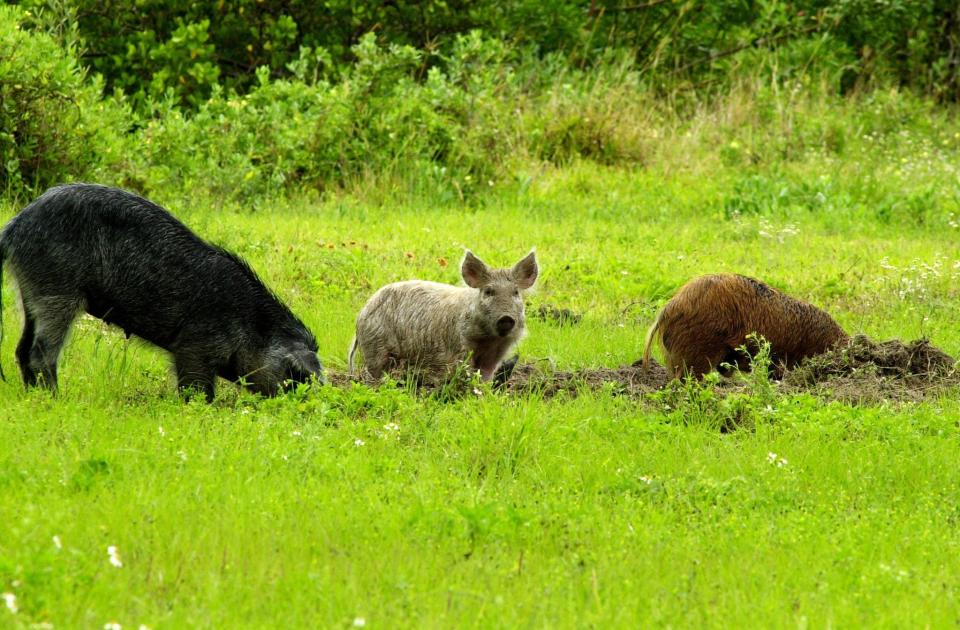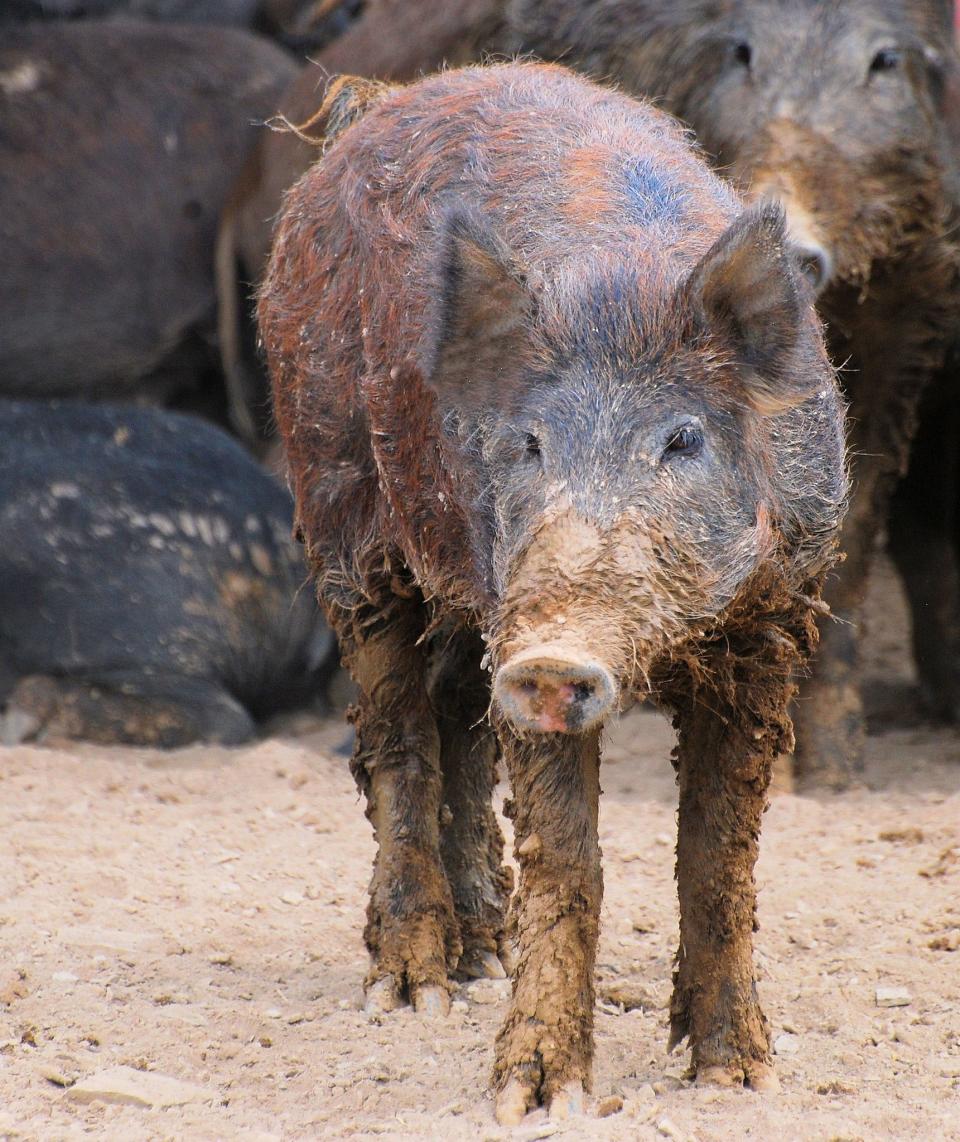Feral hogs have acquired a taste for mussels. That’s bad news for Southern coastlands
Wild hogs are anything but picky eaters, their indiscriminate diet ranging from plants to small rodents to sea turtle eggs.
But it wasn’t until 10-15 years ago that Brian Silliman, a marine conservation biologist at Duke University, discovered they also enjoyed rooting mussels from the mud.
“I didn’t think they could crush them in their mouths, but they eat them like popcorn, no problem,” Silliman said. “When we looked in their poop, it was chock full of mussel shells.”
Dire consequences for marshlands
Now, new research conducted by Silliman and others has found that wild hogs’ newfound taste for shellfish could have dire consequences for Southern marshlands already under threat from climate change and rising sea levels.
“These mussels are the secret sauce to the superpower salt marshes have,” Silliman said. “Salt marshes are one of the only systems not dying off because of drought or warming or anything because of these mussels. The hogs are taking away this superpower.”

In coastal wetlands such as the salt marshes of Sapelo Island, a barrier island off the coast of Georgia where the research took place, ribbed mussels share a vital partnership with cordgrass.
The loss of cordgrass destabilizes coastlines and makes them more susceptible to erosion and the effects of climate change. But mussels form mounds around cordgrass roots which help the vegetation flourish. The mussels filter the surrounding water, deposit nutrients, and move through soil in a way that allows water to drain in the event of heavy rains or storm surges.
On mussel mounds, cordgrass has a 98% chance of survival and a 0.01% chance without them, according to the study.
“It’s the place to be if you’re a marsh plant,” Silliman said.
These mounds are also the key to marshes recovering from droughts, said Marc Hensel, a postdoctoral associate at the Virginia Institute of Marine Sciences who also worked on the study.
“Usually, drought forces marsh grass to retreat into mussel-rich patches and, when drought conditions subside, those patches form the nuclei for rapid post-drought recovery,” Hensel said in a statement. “However, we saw from drone imagery that some marshes were simply not recovering, and that was because those marshes were invaded by feral hogs that specifically target those same mussel-rich areas.”
American South: 'Forever chemicals' found to be major pollutant at Gulf Coast military bases
The study found that the removal of ribbed mussels by feral hogs reduced the amount of biomass in the marsh by 50%. In addition, the marshes recovered three times slower, and a disturbance-recovery model estimated that full marsh recovery could take 80 to 100 years longer.
"With hogs, we’re going to lose marshes at a much greater rate or they won’t be able to resist climate change at all," Silliman said.

Blaine Tyler, game manager for the Georgia Department of Natural Resources, has seen the impacts of feral hogs on Sapelo Island firsthand.
Tyler lives on the island, where trapping and hunting the feral swine is a large part of his job. On walks through the marshes, he can hear the crunching and popping of hogs crushing mussel shells in their mouths. During aerial surveys and hunts, Tyler sees the mudflats where the hog-induced absence of mussels prevented grasses from growing back and water from draining.
The mudflats also work against controlled burns Tyler oversees that help encourage new growth on the island.
'They're tearing up the marshes'
“It’s a big issue. They’re tearing up the marshes pretty good,” Tyler said. “Sapelo is 16,000 acres and 6,000 of that is marsh. That’s a lot of land to cover, and you can only do so much. We’ll never get rid of them.”
While much of the research focused on Sapelo Island, the findings have regional implications.
Of the estimated 6 million feral swine in the United States, at least half are believed to live in the South, said Michael Marlow, assistant program manager for the USDA’s National Feral Swine Damage Management Program.
Feral swine are already considered the most problematic invasive species in the United States, Marlow said.
“Conservatively, $2.5 billion would be a good estimate of annual damage caused by feral swine,” Marlow said.
With ribbed mussels found along both the Gulf of Mexico and the Atlantic coastlines in states littered with feral hogs, the next step for researchers is figuring out how much damage has already been caused to coastal salt marshes, Silliman said.
“I will almost guarantee you the ones the hogs are in are not going to be able to keep up with sea-level rise,” Silliman said.
This article originally appeared on The American South: Wild hogs' taste for mussels makes coasts vulnerable to climate change

